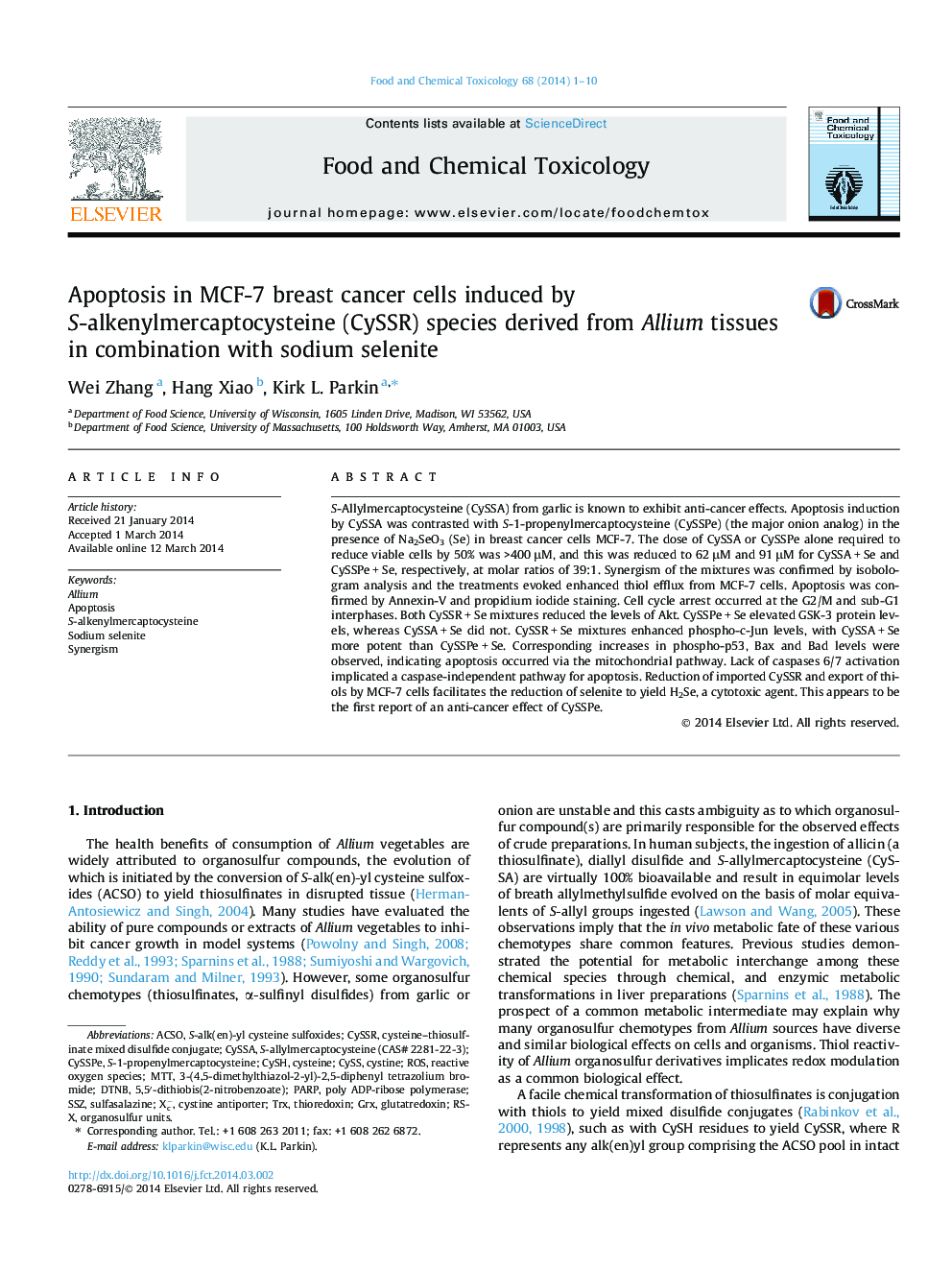| Article ID | Journal | Published Year | Pages | File Type |
|---|---|---|---|---|
| 5850489 | Food and Chemical Toxicology | 2014 | 10 Pages |
â¢S-Allylmercaptocysteines (CySSR) act synergistically with sodium selenite to mediate apoptosis in breast cancer cells.â¢The major CySSRs derived from onion and garlic are similarly potent, but act preferentially on different cellular targets.â¢The proposed mechanism is that cells import and reduce CySSR, then export thiols to reduce selenite to the cytotoxic H2Se.
S-Allylmercaptocysteine (CySSA) from garlic is known to exhibit anti-cancer effects. Apoptosis induction by CySSA was contrasted with S-1-propenylmercaptocysteine (CySSPe) (the major onion analog) in the presence of Na2SeO3 (Se) in breast cancer cells MCF-7. The dose of CySSA or CySSPe alone required to reduce viable cells by 50% was >400 μM, and this was reduced to 62 μM and 91 μM for CySSA + Se and CySSPe + Se, respectively, at molar ratios of 39:1. Synergism of the mixtures was confirmed by isobologram analysis and the treatments evoked enhanced thiol efflux from MCF-7 cells. Apoptosis was confirmed by Annexin-V and propidium iodide staining. Cell cycle arrest occurred at the G2/M and sub-G1 interphases. Both CySSR + Se mixtures reduced the levels of Akt. CySSPe + Se elevated GSK-3 protein levels, whereas CySSA + Se did not. CySSR + Se mixtures enhanced phospho-c-Jun levels, with CySSA + Se more potent than CySSPe + Se. Corresponding increases in phospho-p53, Bax and Bad levels were observed, indicating apoptosis occurred via the mitochondrial pathway. Lack of caspases 6/7 activation implicated a caspase-independent pathway for apoptosis. Reduction of imported CySSR and export of thiols by MCF-7 cells facilitates the reduction of selenite to yield H2Se, a cytotoxic agent. This appears to be the first report of an anti-cancer effect of CySSPe.
Graphical abstractDownload full-size image
